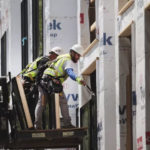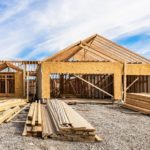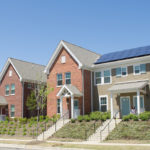Complaints about the condition of homes on military bases, including lead poisoning, mold, and poor construction, have grown worse since the problems were first revealed in a Reuters investigation last August. NBC News did a follow-up piece Friday looking at whether there has been any improvement but found that the number of complaints by military families has increased, now getting the attention of lawmakers.
Seventy-three percent of homeowners say they plan to renovate this year, up 26 percent from a year ago, according to a survey conducted by LightStream, an online lending division of SunTrust Bank. Homeowners plan to spend more on projects, too—an average of about $9,000. That marks the highest amount since the survey began in 2014, and it’s 32 percent more than last year.
The most popular remodeling projects include outdoor space (41 percent), the bathroom (37 percent), and the kitchen (31 percent). Survey respondents say that if money wasn’t a factor, they would remodel their kitchen (42 percent), followed by replacing carpet with other flooring (41 percent), and then remodeling the bathroom (39 percent), according to the survey.
Homeowners appear to be more focused on creating a space they love than increasing the value of their home. Twenty-seven percent of respondents say that personalization was their number one motivator for investing in a home renovation, followed by increasing the value of their home (14 percent), improving a home for resale (7 percent), and preparing for a major life event (4 percent), such as a new baby or retirement. “Regardless of their age, we found that most consumers are focusing their home improvement projects to reflect their personal lifestyle, comfort, and interests,” says Todd Nelson, senior vice president of strategic partnerships at LightStream.
Financial stress, however, can hinder the renovation process, Nelson adds. Some of that stress is due to improper budget planning for materials and labor prior to starting a project. The majority of homeowners say they are paying for their home improvement projects by tapping into their savings (60 percent), credit cards (32 percent), or a home improvement loan (10 percent).

Source: “73% of Homeowners Will Invest in Their Nest This Year,” LightStream (March 5, 2019)
In a survey conducted by the Military Family Advisory Network, 55 percent of 16,000 respondents reported a “negative” or “very negative” experience with privatized military housing. Respondents reported instances of black mold, lead paint, and asbestos, and some said they were facing “chronic illnesses,” such as respiratory ailments, due to housing conditions. A petition to draw attention to such complaintsthat circulated last October garnered more than 3,000 signatures.
“We let down some of our residents,” said John Picerne, founder and CEO of Corvias, a private company that runs military housing, at a U.S. Senate Armed Services Committee hearing last month. “I am sorry, and we are going to fix it.” He told NBC News that Corvias was working on a backlog of work orders and will improve its response time to service requests. The company also said it was hiring a consulting firm to review its mold and mildew procedures.
The Senate is now introducing legislation to require tougher oversight of private landlords. The Department of Defense is proposing a new tenant bill of rights that is intended to increase the accountability of privatized housing companies and give local military leaders more oversight authority. “We have been deeply troubled by the deficient housing conditions,” Col. Kyle Reed said in a written statement to NBC News. “Corvias’ performance has been poor and inadequate up to this point. However, we are seeing improvements daily.”
The military began privatizing its housing in the 1990s. About 30 percent of military families live on military bases. The majority of housing located on bases—which serves about 700,000 service members and their families—is operated by private contractors.
Source: “Military Families Say Housing on Bases Has Lead, Mold, Other Problems,” NBC News (March 8, 2019)












